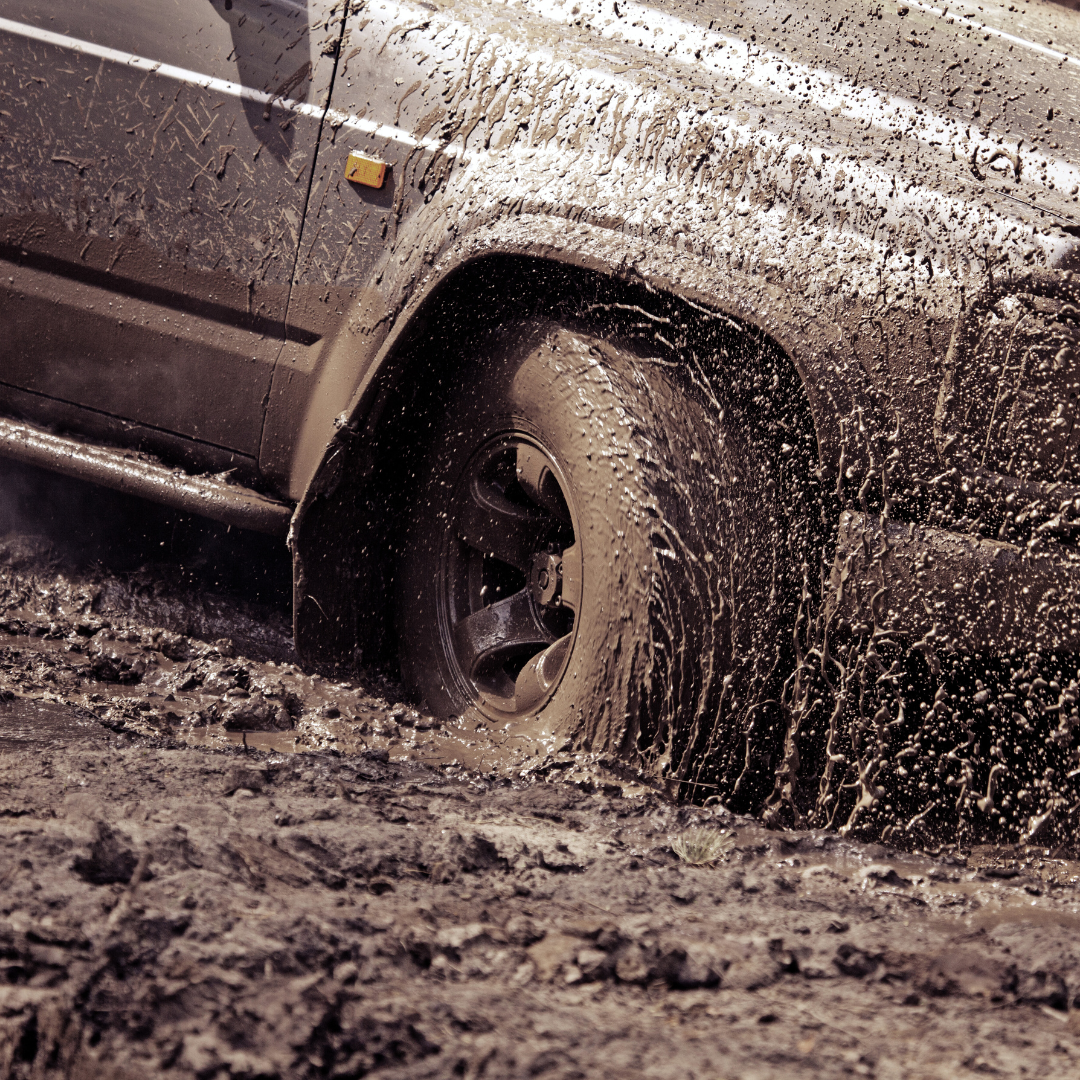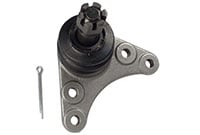Steering Knuckle Assembly and Tie Rod: Keeping Your Luxgen Car on Track
The steering and suspension systems in a vehicle are more than just a collection of parts—they’re key to ensuring a smooth, safe driving experience. Two crucial components in this system are the tie rod ends and the steering knuckle assembly. In Luxgen vehicles, these parts work together to maintain precise control, making sure your car stays on track. This blog will dive into the roles these parts play, how they interact, and why proper maintenance is essential for vehicle performance.
What is a Tie Rod End
A tie rod end is a small but vital part of your vehicle's steering system. Its main job is to connect the steering gear (which moves when you turn the steering wheel) to the wheel assembly, translating your input from the steering wheel into the movement of the tires. Luxgen vehicles rely on tie rod ends to ensure precise steering and maintain wheel alignment.
There are two types of tie rod ends in a steering system:
- Inner Tie Rod End: This connects to the steering gear and is protected within the steering assembly, making it less prone to wear.
- Outer Tie Rod End: Positioned closer to the wheel, it connects to the steering knuckle assembly and is more exposed to road conditions, meaning it wears out faster.
Without functioning tie rod ends, the connection between your steering input and the actual wheel movement would be lost, making it impossible to steer your vehicle accurately.

What is a Steering Knuckle Assembly
The steering knuckle assembly plays a critical role in the movement and suspension of your vehicle. It connects several key components, including the wheel hub, the suspension system, and, of course, the tie rod ends. The steering knuckle acts as a pivot point for the wheels, enabling them to turn as you steer.
Steering knuckles must withstand the stresses of everyday driving, and their connection to the tie rod ends is what ensures your vehicle responds correctly to your steering commands.
How the Steering Knuckle Assembly Connects to the Tie Rod End
The connection between the tie rod end and the steering knuckle assembly is where the magic of steering happens. When you turn the steering wheel, the steering gear moves the inner tie rod, which then passes this motion to the outer tie rod. The outer tie rod, in turn, moves the steering knuckle, causing the wheels to pivot and follow the direction of the steering wheel.
This direct connection is what allows for precise control of your vehicle. Proper alignment of these parts ensures that your Luxgen responds smoothly to every steering command.s.
How Tie Rod Ends Support the Steering Knuckle Assembly
The tie rod end plays a critical role in supporting the steering knuckle assembly in several key areas: stability, alignment, steering precision, and overall suspension performance. Here's a comprehensive look at how the tie rod ends contribute to each of these areas:
-
Stability: Maintaining Vehicle Control on Uneven Roads
The tie rod end ensures the connection between the steering system and the wheels is solid, allowing for consistent control, especially on uneven or rough road surfaces. When you drive over bumps or potholes, the tie rod ends absorb some of the motion and prevent excessive movement from being transferred to the steering knuckle. This helps maintain stability by ensuring that the wheels stay firmly in contact with the road, reducing the risk of losing control.
Imagine driving over a pothole at moderate speed. Without a properly functioning tie rod end, the impact could cause the steering knuckle to move erratically, making the wheels wobble and compromising your control. With healthy tie rod ends, the connection between the steering gear and knuckle remains stable, allowing the suspension system to absorb the shock while keeping the wheels steady. -
Alignment: Ensuring Even Tire Wear and Accurate Steering
Tie rod ends are essential for maintaining wheel alignment, which directly impacts how evenly your tires wear and how responsive your steering feels. The length of the tie rods is adjustable to ensure that the wheels are properly aligned. This alignment ensures that the steering knuckle turns both wheels at the correct angles during cornering, helping the vehicle maintain traction and balance.
If the tie rod ends wear out, the alignment can drift off. This causes one tire to be at a slightly different angle than the other, leading to uneven tire wear and pulling to one side when driving straight. Well-functioning tie rod ends keep the wheels in sync, allowing the steering knuckle to pivot evenly, preventing unnecessary tire wear and maintaining a smooth driving experience. -
Steering Precision: Transmitting Driver Input to the Wheels
At the core of steering precision is the tie rod end's ability to transmit motion from the steering gear to the steering knuckle assembly. This movement is crucial for precise control when you turn the steering wheel. The outer tie rod end connects directly to the steering knuckle, converting the rotational motion from the steering wheel into lateral motion that allows the wheels to turn.
When you turn the steering wheel, the inner tie rod moves the outer tie rod, which then pushes or pulls on the steering knuckle assembly. A worn tie rod end can create play in the steering system, leading to a delayed or imprecise steering response. A new or properly maintained tie rod end ensures that every movement you make with the steering wheel is directly transferred to the wheels, allowing you to steer exactly where you want to go, without any lag or hesitation. -
Suspension Performance: Reducing Vibrations and Enhancing Comfort
While the tie rod end is primarily part of the steering system, it also indirectly affects the suspension performance of your vehicle. The steering knuckle is connected to other suspension components, like control arms and shock absorbers. A worn tie rod end can introduce vibrations into the steering system, which can affect the suspension and overall ride comfort.
A well-maintained tie rod end helps keep the steering knuckle stable, reducing the amount of vibration that passes through the suspension. For example, if the tie rod end is loose, you might feel every bump and pothole more sharply in the steering wheel and the cabin. But when the tie rod ends are functioning properly, they act as a stabilizing link, ensuring that the suspension absorbs these impacts while keeping the steering and handling smooth and controlled. -
Turning Radius and Cornering Efficiency
Tie rod ends also play a role in determining your vehicle’s turning radius. By connecting the steering rack to the steering knuckle, they help control how far the wheels pivot during a turn. If the tie rod ends are worn or damaged, the vehicle may experience a reduced or inconsistent turning radius, affecting your ability to make tight turns or navigate corners effectively.
During sharp turns, the outer tie rod end pulls or pushes the steering knuckle to pivot the wheel to the correct angle. A healthy tie rod end allows for smooth, controlled cornering, while a worn tie rod may cause the vehicle to understeer or oversteer. For instance, when cornering at higher speeds, worn tie rod ends may result in reduced control, making the car feel unstable as it leans into the turn. -
Safety: Ensuring Secure Connections
The connection between the tie rod end and the steering knuckle is one of the most critical for vehicle safety. A worn or loose tie rod end can lead to a loss of control, particularly during emergency maneuvers or sharp turns. Keeping the tie rod ends in good condition ensures that the steering knuckle remains securely attached, preventing any dangerous disconnections while driving.
Consider an emergency situation where you need to make a sudden turn to avoid an obstacle. If the tie rod end is loose or worn, this sudden maneuver could cause it to detach from the steering knuckle, leading to a loss of control over the vehicle. With properly functioning tie rod ends, the steering knuckle remains tightly secured, allowing you to execute sharp turns or swerves without fear of disconnection.
This connection is key to maintaining vehicle stability, especially during tight turns or when driving over uneven surfaces. Without this crucial link, your vehicle would feel loose and unsteady, reducing both comfort and safety.
The Effect of Worn Tie Rod Ends on the Steering Knuckle Assembly
Worn tie rod ends can have a significant impact on the steering knuckle assembly. As tie rod ends deteriorate, the connection between the steering system and the wheels weakens, causing various issues such as:
-Loose Steering: You may notice a delay in steering response or a "wandering" sensation when driving straight.
-Uneven Tire Wear: Misaligned tie rods lead to uneven pressure on the tires, which can wear them down prematurely.
-Vibrations: The compromised connection results in more road vibrations being transferred through the steering knuckle, affecting overall driving comfort.
Ignoring these signs can lead to more severe issues, such as total loss of steering control, which poses serious safety risks. If you suspect any problems with your tie rod ends, it's crucial to address them immediately.
How to Prevent Tie Rod End Wear
To avoid the costly repairs associated with worn tie rod ends, regular maintenance is key. Here are some tips to help you keep your tie rod ends in good condition:

-Regular Inspection: Periodically check the tie rod ends for signs of wear or damage, such as cracks, rust, or looseness.
-Proper Lubrication: Keep your tie rod ends well-lubricated with the appropriate grease. This reduces friction and prevents wear.
-Wheel Alignment: Ensuring your wheels are properly aligned will help distribute the pressure evenly across the tie rods, extending their lifespan.
-Timely Replacement: If you notice signs of wear—such as clunking noises, uneven tire wear, or loose steering—replace the tie rod ends before they cause further damage to the steering knuckle assembly.
By following these preventative measures, you can avoid unnecessary wear and ensure that your steering system remains in peak condition.
Upgrade Your Luxgen's Handling with High-Quality Tie Rod Replacements
When it’s time to replace your tie rods, selecting the right components can significantly improve your Luxgen's handling and ensure lasting reliability. Here’s why Great Auto Parts tie rod ends are an excellent choice for enhancing your vehicle:
- Built to Last: Manufactured from high-strength steel using advanced forging techniques for durability.
- Corrosion-Resistant: Each tie rod end is treated to resist rust, providing long-term protection.
- Improved Flexibility: Designed with a wide swing angle of at least 60 degrees for better steering control.
- Exceptional Strength: Meets or exceeds original equipment standards for superior durability.
- Seamless Fit: Designed to perfectly replace the original tie rod ends, ensuring a hassle-free installation.
- Small Order Flexibility: With a minimum order of just 30 pieces, small businesses can easily access high-quality parts.
Choose Great Auto Parts for a smoother driving experience and reliable performance in your Luxgen Vehicle.






